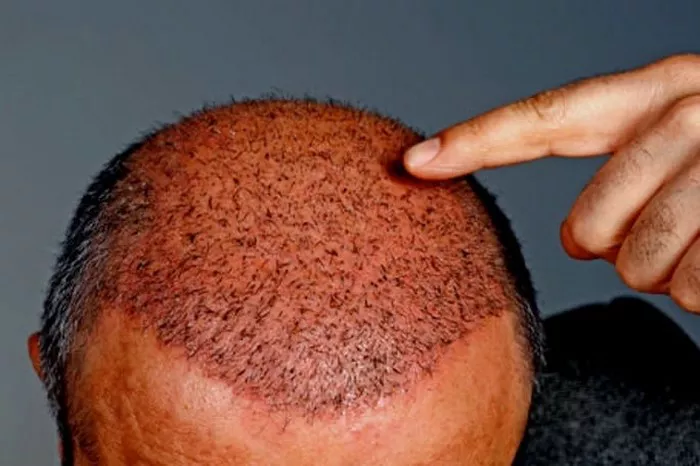Hair loss can be a distressing experience for many individuals, prompting a search for effective solutions. Direct Hair Implantation, or DHI, has emerged as an advanced hair transplant technique offering promising results. In this comprehensive guide, we will explore the key aspects of DHI hair transplant, from the procedure itself to its advantages and potential considerations.
Understanding DHI Hair Transplant
DHI is a modern and minimally invasive hair transplant technique that falls under the umbrella of follicular unit extraction (FUE). Unlike traditional FUE, where grafts are manually implanted into incisions made by a surgeon, DHI employs a specialized pen-like instrument called the Choi Implanter Pen to directly implant grafts into the recipient area.
See Also: The Meaning Of Artas Hair Transplant: All You Need To Know
The DHI Procedure: Step by Step
Consultation and Assessment: The journey begins with a thorough consultation and assessment by a qualified DHI specialist. During this stage, the surgeon evaluates the patient’s hair loss pattern, donor hair availability, and overall scalp health.
Hair Graft Extraction: The next step involves the extraction of hair grafts from the donor area, typically located at the back or sides of the scalp. Using a micro-punch, individual hair follicles are carefully harvested to ensure minimal damage to surrounding tissues.
Graft Sorting and Storage: The harvested hair grafts are then meticulously sorted based on their natural growth direction and angle. This sorting process aims to mimic the natural pattern of hair growth, enhancing the final aesthetic outcome. The grafts are temporarily stored in a nutrient-rich solution to maintain their vitality.
Recipient Site Creation: Unlike traditional FUE, where recipient sites are created before graft implantation, DHI involves simultaneous site creation and graft implantation. The Choi Implanter Pen, equipped with a hollow needle, is used to create tiny incisions in the recipient area.
Graft Implantation: One of the defining features of DHI is the direct implantation of grafts using the Choi Implanter Pen. The surgeon carefully inserts each graft into the pre-made incisions, ensuring precision and control over the angle and depth of implantation.
Post-Procedure Care: Following the DHI procedure, patients receive instructions for post-operative care. This may include guidelines on washing the scalp, avoiding strenuous activities, and taking prescribed medications to support healing and prevent infection.
Advantages of DHI Hair Transplant
Natural Results: DHI’s meticulous approach to graft sorting and direct implantation allows for the creation of natural-looking hairlines. The precise control over the angle and depth of implantation contributes to the overall aesthetic outcome.
Minimally Invasive: DHI is considered a minimally invasive procedure as it eliminates the need for creating large incisions in the recipient area. This can result in quicker healing times, reduced scarring, and minimal post-operative discomfort.
High Graft Survival Rate: The Choi Implanter Pen’s gentle handling of grafts during implantation contributes to a high graft survival rate. This means a larger percentage of transplanted hair follicles successfully take root and grow in the recipient area.
No Need for Shaving: Unlike some traditional hair transplant methods that require shaving the entire head, DHI allows for selective shaving in the donor area only. This means that patients can maintain their existing hairstyle during the healing process.
Quick Recovery: With minimized trauma to the scalp, DHI often allows for a quicker recovery compared to other hair transplant methods. Most patients can resume their normal activities within a few days, and the healing process is generally well-tolerated.
Considerations and Precautions
While DHI offers several advantages, it’s essential to consider certain factors before opting for the procedure:
Cost: DHI hair transplant can be relatively more expensive than some traditional methods. The precision and expertise involved in the procedure contribute to the overall cost.
Qualified Practitioners: Choosing a qualified and experienced DHI specialist is crucial for a successful outcome. Research and verify the credentials of the clinic and surgeon before making a decision.
Expectations: Realistic expectations are key to satisfaction with any hair transplant procedure. While DHI provides impressive results, individual outcomes may vary, and complete hair regrowth may take several months.
Follow-Up Care: Patients must adhere to post-operative care instructions provided by their DHI specialist. This includes avoiding exposure to direct sunlight, refraining from strenuous activities, and using prescribed medications as directed.
Conclusion: DHI – Pioneering Precision in Hair Transplantation
DHI hair transplant represents a pioneering approach to hair restoration, emphasizing precision, natural results, and minimal invasiveness. As with any medical procedure, thorough research, consultation with qualified practitioners, and realistic expectations are essential. For those seeking a modern solution to hair loss, DHI offers a pathway to regaining a natural and fuller head of hair with minimized downtime and excellent aesthetic outcomes.


